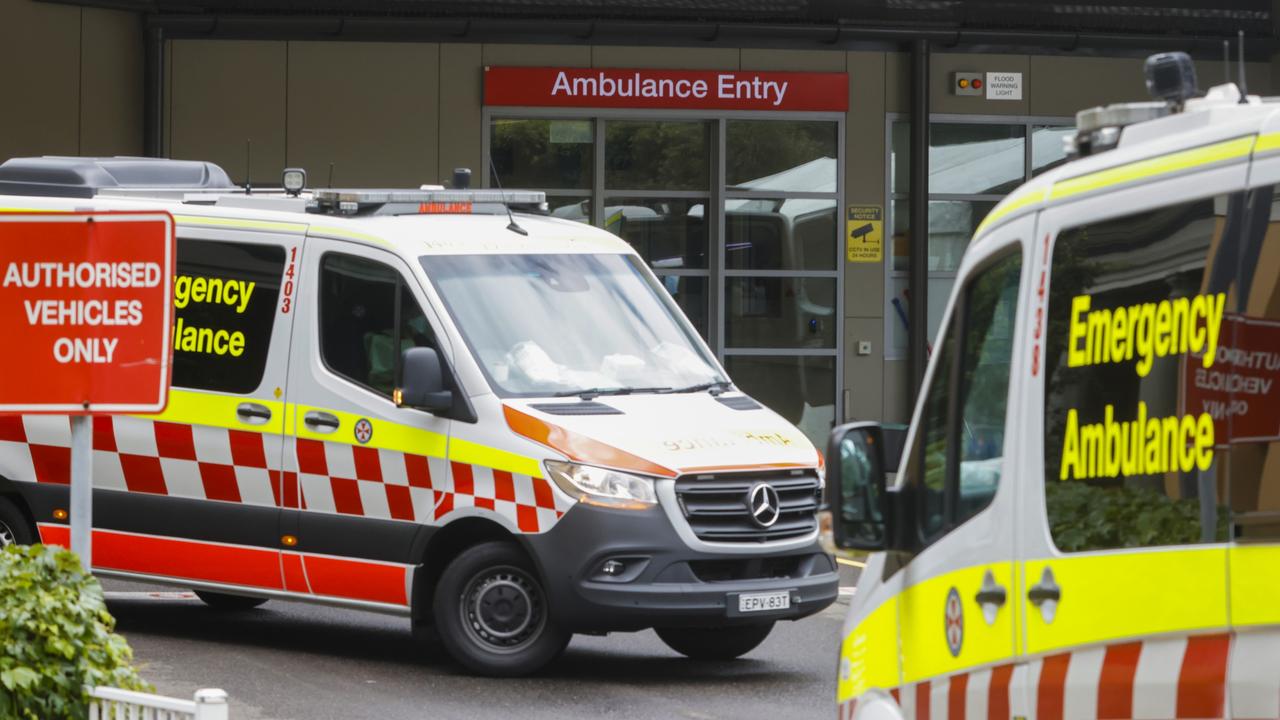Why Omicron ICU rates in NSW aren’t as high, as cases soar
Covid is spreading faster in Australia than ever before - but one figure could signal we don’t have another Delta situation on our hands.
Many in NSW had hoped the end of 2021 would also, finally, signal the end of Covid-19.
After a year riddled with lockdowns, restrictions and border closures, December was meant to bring with it the celebrations and reunions with loved ones interstate and overseas that came with being fully vaccinated. Instead, we got the more contagious Omicron variant.
Case numbers are higher than ever — not just in NSW, but right across Australia; tens of thousands of people have been forced to trade their end-of-year festivities for isolation instead.
But among the surging daily infection numbers, one figure could signal some good news: we might not have another Delta situation on our hands.
In the 24 hours to 8pm last night, there were 21,151 new cases. But of the more than 100,000 active cases currently in NSW, just 832 patients are being treated for Covid-19 in hospital, and of those, 69 are in intensive care.
“Hospitalisations are rising, but not at the same rate as newly reported cases, even allowing for a time lag, as people who do go on to develop serious symptoms usually do so a week or a more into their infection,” chair of epidemiology at Deakin University, Catherine Bennett, told news.com.au.


Professor Bennett pointed to early studies published in both the UK and South Africa (where Omicron was first discovered) this month, which suggest that people who contract the variant are far less likely to face severe illness and admission to hospital than those who contract the Delta variant.
Both countries have also reported “that Omicron infections that do lead to a hospital admission result in shorter stays on average, and this also helps keep numbers down on any given day, relative to other variants”.
“Importantly, fewer hospital admissions might also end up in intensive care now — in the Delta outbreak in NSW, up to one 1/4 of hospitalised patients were in ICU; currently, it is less than 1/10,” Prof Bennett explained.
The number of ICU patients requiring a ventilator is also down – during the Delta outbreak, the percentage of people in intensive care who required ventilation was over 20 per cent; now, only two per cent of patients require the use of one.
NSW COVID-19 update – Friday 31 December 2021
— NSW Health (@NSWHealth) December 30, 2021
In the 24-hour reporting period to 8pm last night:
- 95% of people aged 16+ have had one dose of a COVID-19 vaccine
- 93.6% of people aged 16+ have had two doses of a COVID-19 vaccine pic.twitter.com/31xWp1fJ73
While case numbers in NSW increased swiftly as Omicron spread, Prof Bennett said the people currently being treated in hospital for Covid-19 “have been more likely to have a Delta infection” and on top of that, are often unvaccinated.
“The case numbers tell a different story to hospital numbers, as many Omicron infections were amongst younger people less likely to end up in hospital anyway, many were vaccinated so had added protection from serious illness, and we also have better antiviral and monoclonal antibody treatment options that help prevent those at risk of serious illness from going down that path if caught early enough,” she added.
“But the Omicron variant is also responsible for part of this picture — and we can see that if we compare NSW with Victoria, which has a larger underlying Delta outbreak. ICU admissions in Victoria have consistently been more than double that of NSW until this week, even though the reported case numbers were less than half of (those in) NSW.”
Prime Minister Scott Morrison announced yesterday that the majority of Australia’s jurisdictions, including NSW, would alter their isolation and testing rules, and definitions of a “close contact” in a bid to preserve testing capacity and limit the number of furloughed workers in the health, hospitality and retail sectors (among others).
Off the back of the announcement, Australia Medical Association President Omar Khorshid acknowledged that the amended rules would achieve this — but “will come at the cost of accelerating the outbreak”.
“It seems national cabinet is prepared to bet that a massive Omicron outbreak won’t cause large numbers of hospitalisations,” Dr Khorshid said.
“We expect hospitalisations to rise in coming weeks, simply due to the very large number of cases, which will be far larger than the positive tests indicate, due to today’s decision.”
Prof Bennett echoed a similar sentiment, warning hospitalisations will inevitably rise as cases continue to, and that higher infection rates in the community “put another added strain on healthcare, as people going to hospital for other reasons, after an accident or delivering a baby, have a higher chance of also having an asymptomatic infection”.
“It is possible that hospitalised cases could match or exceed the peak numbers seen in the seekers outbreak, and we not far off that now,” she added.
“But, with more new cases being Omicron infections, and the very high vaccination rates reducing the risk of serious illness, even with a Delta infection, ICU cases may stay below previous peaks and, importantly, the number of people on ventilators could remain manageable.”

But a lower intensive care rate, Prof Bennett said, is not reason for residents to become complacent.
“It means that we can cope with more cases than before because vaccination rates are high, antiviral secondary prevention from serious illness is working for those at high risk of serious disease, and also because Omicron seems to put less people in hospital – and hopefully that applies to unvaccinated people also,” she said.
“But, we still need to keep transmission as suppressed as we can so that high infection rates don’t realise this lower risk in numbers that still overload our hospitals.
“Boosters will help as they reduce the risk of symptomatic infection with Omicron and have a stronger protective effective against Delta infections, which helps protect those who aren’t vaccinated.
“But we also should all try to avoid infection if we can, including distancing from others, wearing masks when around others, and testing if we do get symptoms.”






